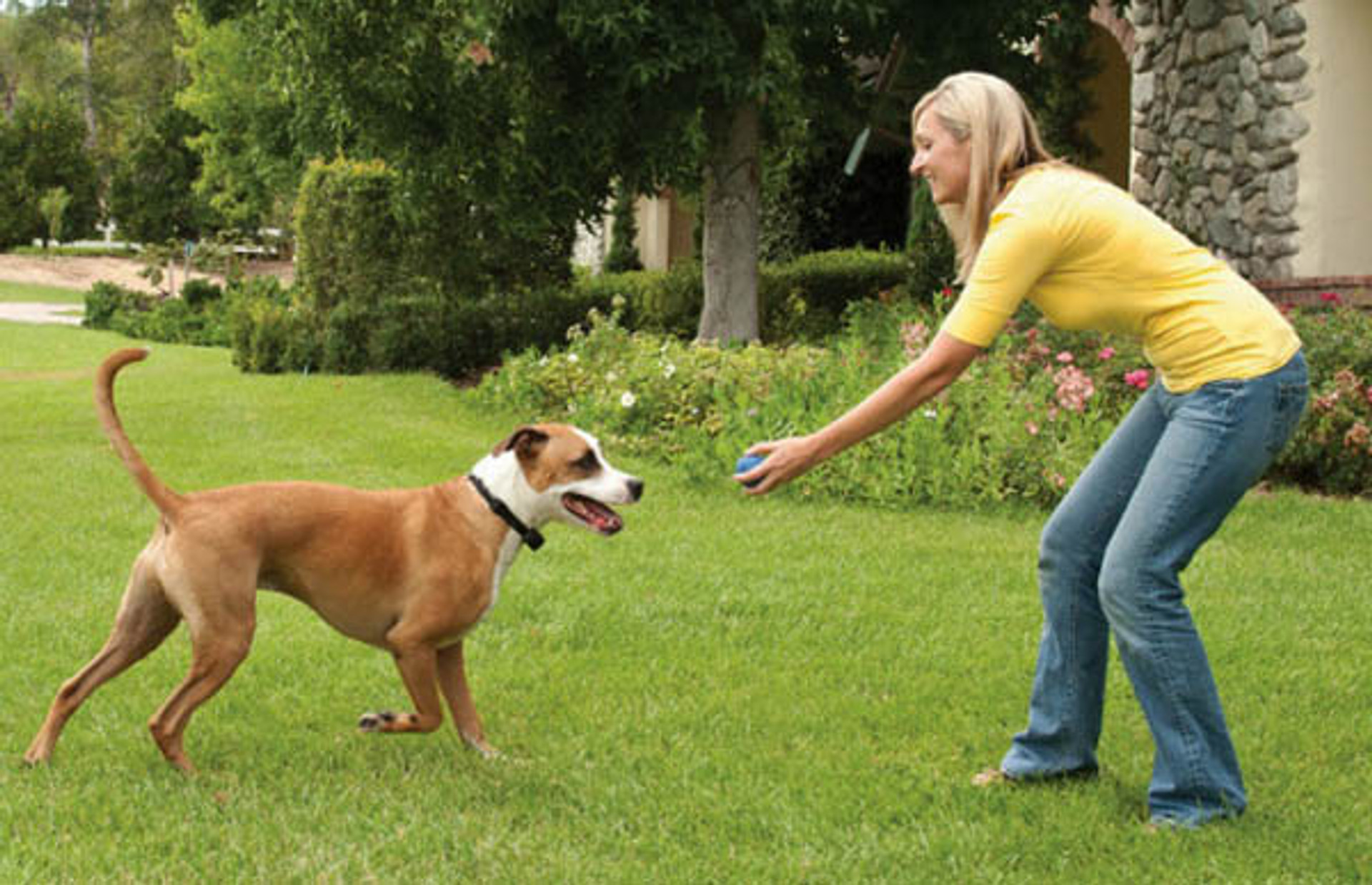Why is the training so important once you have installed your dog containment fence?
Simple answer, we want to teach the dog that approaching the restricted zone of your dog fence is better avoided and staying in the safe zone is the safest place to be! Imagine if you set your containment system up, whack on the collar and just let your dog figure it out.

Fight vs. Flight Response
If your dog hasn't had any training, they will eventually walk up to the stimulation zone, and they will display one of two responses; flight, or fight.
The Flight Response
The flight (or freeze) response may lead to your dog to freeze and cop the correction for several seconds before backing up from the stimulation zone.
Or, they will immediately retreat from the area but they will be extremely cautious of where they step in the yard. You don't want your dog to feel scared about walking around their yard!

The Fight Response
On the other hand, the fight response may cause your dog to run further into the restricted area, receiving even more corrections. They may continue to receive static pulses as they try to figure out where it can go to avoid more corrections.
Alternatively, if you have no physical fencing, your dog might run straight through the stimulation zone, ending up on the outside of your property.
This defeats the purpose of having an electric dog fence system in the first place because now your dog knows that if they run far enough, the correction stops and they can escape the yard.

The Most Common Reaction? The Fight Response
The first reaction for nearly all dogs at the point of receiving the correction is to move forward in the direction that it is facing. This will then leave them in the restricted correction area or beyond as earlier discussed.
The idea is to have the dog move backwards into the safe zone not forwards further into the correction zone. So how do we get them to move back rather than go forward?
Training!
Watch the Training Instructions
All radio fence systems for dogs come with detailed training instructions or DVDs that explain how to train your dog to live within its new escape proof surrounds. Be sure to read these instructions carefully and follow them. I have written an article outlining a quick and easy process for electric dog fence training which you can view here - Dog Fences...A Simple Training Guide.
There may be subtle variations in training methods but the key for all training systems is the same. Activate the correction or warning tone - Move back into the safe zone!
Run through zones
If you are on a property that has no physical fences or boundaries you need to pay extra attention to training your dog to react to an electric dog fence.
I call the unfenced areas 'run-through zones'. This is any area where the dog can escape by running straight through the boundary without needing to dig under or climb a structure in their path.
If you have run through zones I always recommend getting a dog containment fence that has adjustable collar settings, just in case you need to increase the correction level. Whichever dog fencing system you use, getting your dog to turn around is vitally important in yards with run through zones so make sure you do the training.
Your electric dog fence is there to save your dog's life, installing the system is only one part of the process. Training your dog to know its boundaries and how to avoid the restricted area is imperative to ensure the effectiveness of the system and the safety of your dog's life!






